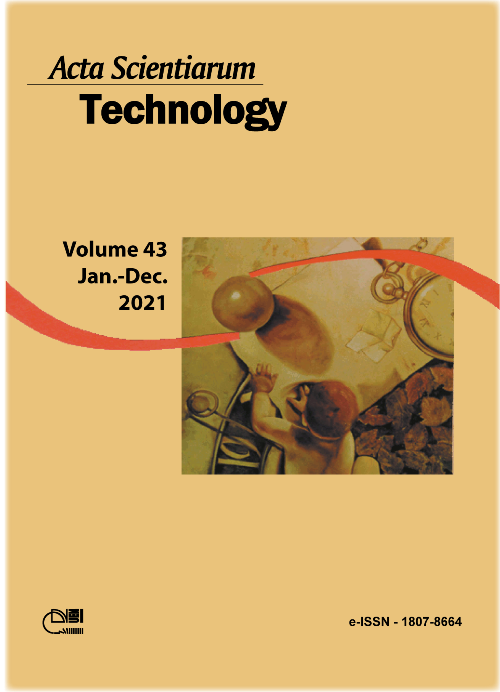Drying of foods under intermittent supply of microwave energy: proposal for a mathematical model
DOI:
https://doi.org/10.4025/actascitechnol.v43i1.51037Keywords:
numerical simulation; microwave heating; non-equilibrium phase change; lambert´s law.Abstract
Intermittent microwave drying improves the quality of the dehydrated product, because reduces the effect of microwave hot spots. Mathematical modelling is essential to understand the physics of this drying process and to optimize the operation conditions. However, there are few modelling studies about intermittent microwave drying. This work proposed a mathematical model based on mass balances of liquid and vapor water in which a non-equilibrium formulation described the water phase change. The microwave heating, described by Lambert´s law, was accounting as source term on the thermal energy conservation equation. The numerical solution used the finite element method, and the experimental drying of potato samples validated the simulated drying. The values of moisture content and temperature obtained by numerical solution of the model showed good agreement with experimental data. From this, it was observed the presence of three periods in the drying kinetics: an initial heating phase almost without drying, follow by a phase with constant drying rate, and final a decrease of drying rate and temperature increasement. The model results showed that the interior temperature was higher than the surface temperature of sample, and there was water evaporation inside the potato. In additional, the gradients of temperature were reduced due to intermittency of the microwave power. This redistribution of temperature could contribute to the improvement of product quality during drying.
Downloads
Downloads
Published
How to Cite
Issue
Section
License
DECLARATION OF ORIGINALITY AND COPYRIGHTS
I Declare that current article is original and has not been submitted for publication, in part or in whole, to any other national or international journal.
The copyrights belong exclusively to the authors. Published content is licensed under Creative Commons Attribution 4.0 (CC BY 4.0) guidelines, which allows sharing (copy and distribution of the material in any medium or format) and adaptation (remix, transform, and build upon the material) for any purpose, even commercially, under the terms of attribution.
Read this link for further information on how to use CC BY 4.0 properly.











8.png)




